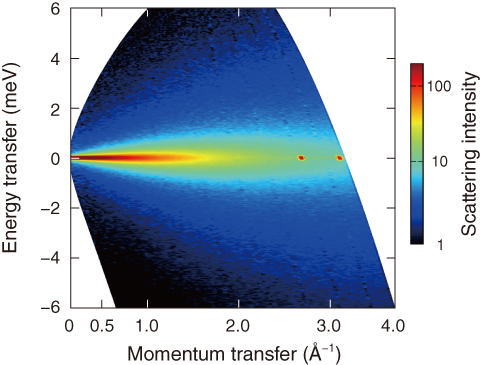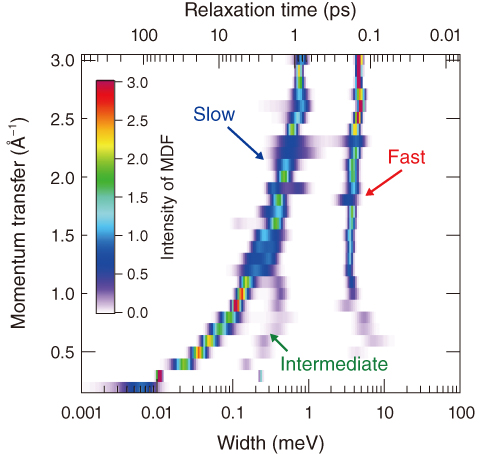
Fig.5-34 Quasielastic neutron scattering of water

Fig.5-35 Calculated mode distribution function of water
Diffusion is an important process in materials and living tissue. For instance, it is involved in the functional expression of proteins, and plays a role in the capabilities of ion and proton conductors, which are now being investigated as battery materials. Therefore, by elucidating diffusion mechanisms, we can control the functional expressions and capabilities of materials. Quasielastic neutron scattering (QENS) is among the few powerful techniques that can investigate the relationships between time and space in the diffusion motions of atoms and molecules. Therefore, QENS allows an in-depth study of diffusion. However, the correctness of diffusion models is difficult to demonstrate by conventional QENS analysis, as the model must be assumed prior to analysis, and therefore cannot naturally emerge from the results.
We have developed a versatile analysis method that requires no model assumptions. By this method, we can understand the model from the obtained results. We represent all diffusion processes of a material as a set of “simple diffusions.” In a “simple diffusion,” on average, the particles gradually spread out with a constant relaxation time. In this scenario, the diffusion process can be converted into the intensity distribution of the relaxation time. We call this distribution the mode distribution function (MDF). The MDF directly provides the number of diffusion motions, and their types and speeds. The conversion to MDF adopts the maximum entropy method based on information theory.
We applied this new method to a diffusion study of water. QENS experiments were performed on AMATERAS at J-PARC. AMATERAS can measure over a wide area at high resolution and is ideally suited for this method. A QENS spectrum of liquid water is shown in Fig.5-34. The characteristics of the diffusion are not directly interpretable from this figure. However, the MDF obtained from the QENS spectrum (Fig.5-35) clearly shows three types of motions. In particular, an unsuspected intermediate motion is discovered. Therefore, the MDF reveals the detailed characters of diffusion motions. This result is important for understanding the overall picture of diffusion in water.
We hope that such diffusion studies will advance a wide range of research fields and uncover new knowledge that will benefit science and technology.